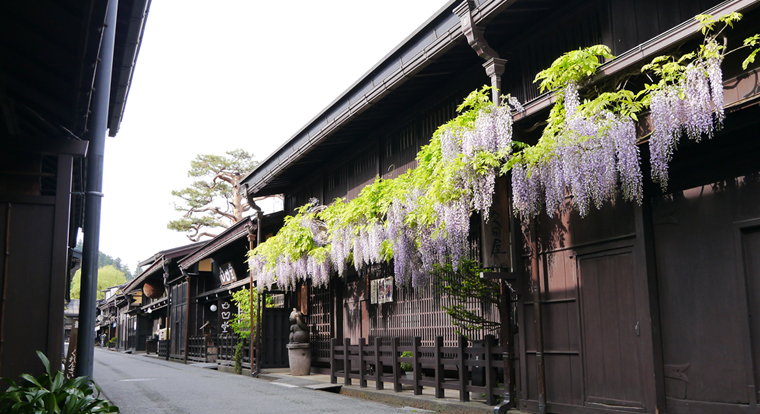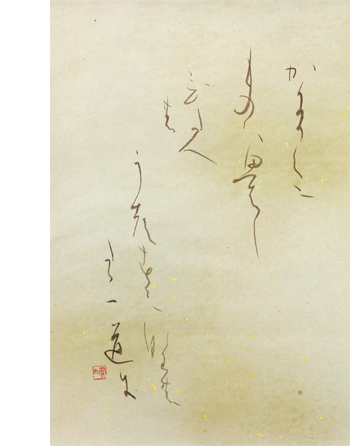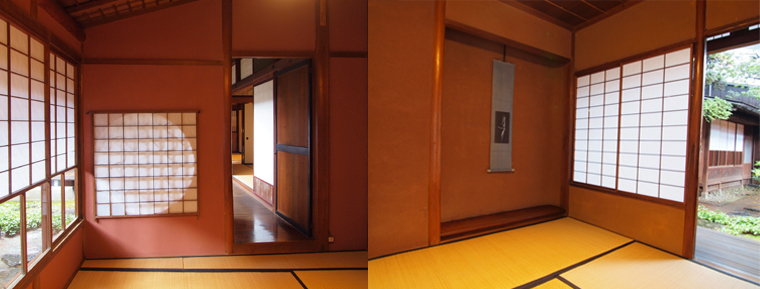HOME» ABOUT KITANI »About Takayama
ABOUT KITANI
About Takayama
TOP > About Kitani > About Takayama

A popular sightseeing location with an allure of rich natural beauty and history
Hida Takayama is an area in Gifu prefecture, which is located almost exactly in the center of Japan. One of Japan’s most popular sightseeing locations, it has great charm in its rich natural beauty and history. It is also known as the “Little Kyoto of Hida”, and its quaint townscape evokes feelings of romance, captivating visitors from within Japan as well as from overseas.Several famous hot springs can be found near Hida, and among those in its surrounding areas the Hirayu Onsen is the one with the longest history. Here, the grand beauty of nature can be experienced in tune with the seasons, which bring breathtaking sights including autumn leaves and winter snowscapes. At Shirakawa-go, which is roughly 50 minutes from Takayama by bus, visitors can see a village of thatched-roof houses built using a traditional form of Japanese housing construction known as gassho-zukuri. This area was designated a World Heritage Site in 1995, allowing a glimpse into the lifestyle wisdom of people who continue to live in harmony with nature just as they did long ago.
 Sanmachi Street in Takayama City
Sanmachi Street in Takayama City left: Hirayu Hot Spring /right: Shirakawa-go
left: Hirayu Hot Spring /right: Shirakawa-go A furniture-makers’ town that has inherited master craftsmanship skill
| The history of furniture-making in Hida Takayama began 1200 years ago, when Japan’s first capital city was being built, and 100 people traveled from areas in Hida Takayama to the city every year to work on its construction. Due to their magnificent skill, they were requested and appointed over a period of 400 years, and became known as the “Artisans of Hida”. They played a huge role in supporting the “golden age” of construction in Japan’s history, engaging in the construction of numerous shrines and temples such as Yakushi-ji, the Yumedono (Hall of Dreams) in Horyu-ji, and Todai-ji. Even today, many workshops of furniture manufacturers famous across all of Japan are located here, and it has become a leading Japanese furniture-makers’ town. |  A poem in the “Manyoshu” tanka poem anthology that describes the work of the Artisans of Hida |
Northern European designs influenced by Japan’s traditional architecture
Modern Northern European design was born in countries where people live in harmony with nature. It is not widely known in Japan, but Northern European designers were heavily influenced by Japan’s traditional architecture and the sukiya tea-ceremony room style of building. There are many examples where the grandeur of Japan’s wooden architecture, with its long history and beautiful forms able to withstand wind and snow, caught the eyes and captured the lasting attention of many designers. The unique Japanese artistic concepts of “wabi” and “sabi” (concepts emphasizing quiet simplicity and subdued refinement) can often be seen in designs from Northern Europe, together with clean decor having no unnecessary elements. The spirit of “harmony” in offering a warm welcome to guests lives on in these designs. Yoshijima-tei, in Hida Takayama
Yoshijima-tei, in Hida Takayama| 2016/07/10 |










